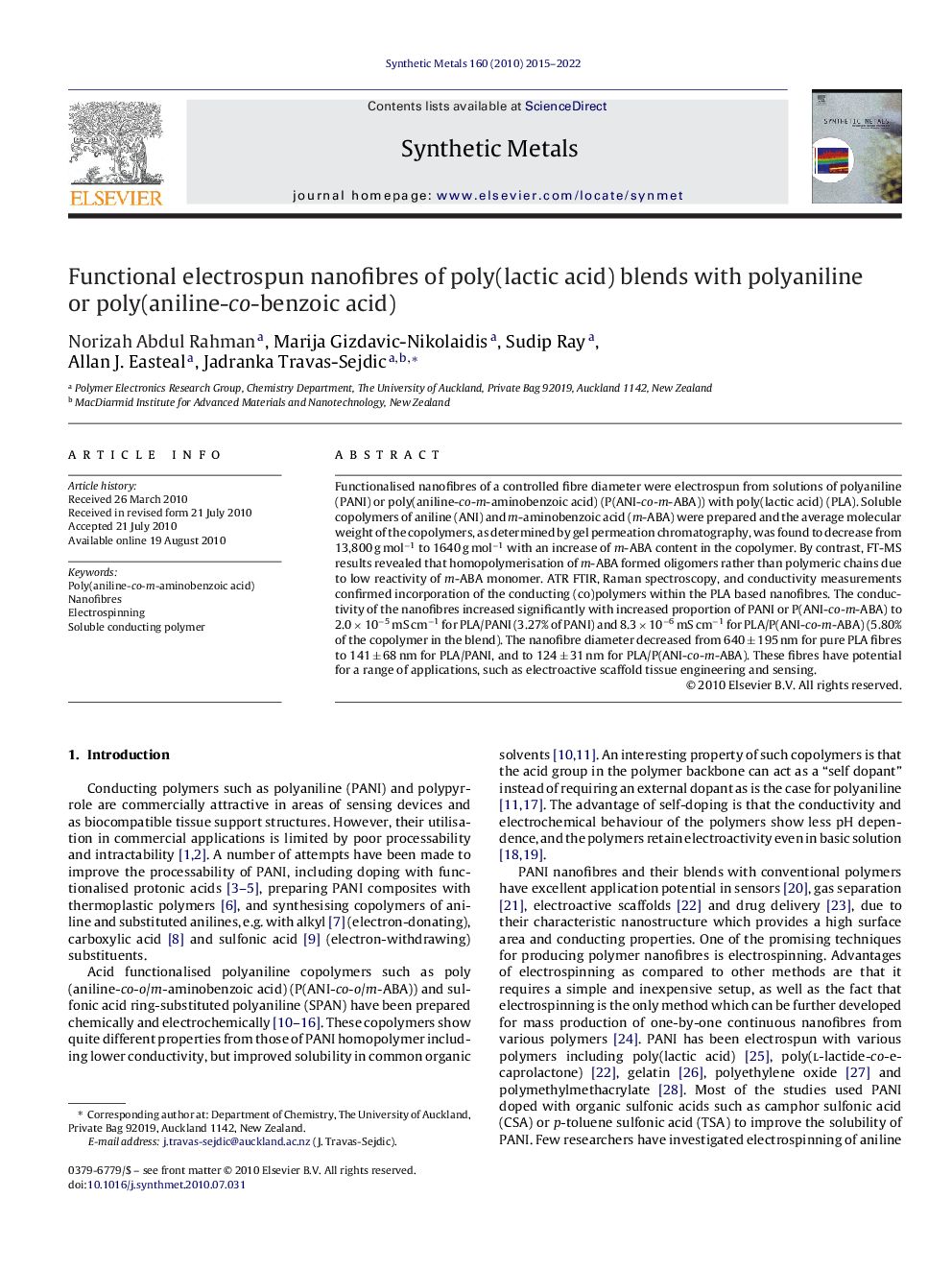| کد مقاله | کد نشریه | سال انتشار | مقاله انگلیسی | نسخه تمام متن |
|---|---|---|---|---|
| 1442374 | 1509440 | 2015 | 8 صفحه PDF | دانلود رایگان |
Functionalised nanofibres of a controlled fibre diameter were electrospun from solutions of polyaniline (PANI) or poly(aniline-co-m-aminobenzoic acid) (P(ANI-co-m-ABA)) with poly(lactic acid) (PLA). Soluble copolymers of aniline (ANI) and m-aminobenzoic acid (m-ABA) were prepared and the average molecular weight of the copolymers, as determined by gel permeation chromatography, was found to decrease from 13,800 g mol−1 to 1640 g mol−1 with an increase of m-ABA content in the copolymer. By contrast, FT-MS results revealed that homopolymerisation of m-ABA formed oligomers rather than polymeric chains due to low reactivity of m-ABA monomer. ATR FTIR, Raman spectroscopy, and conductivity measurements confirmed incorporation of the conducting (co)polymers within the PLA based nanofibres. The conductivity of the nanofibres increased significantly with increased proportion of PANI or P(ANI-co-m-ABA) to 2.0 × 10−5 mS cm−1 for PLA/PANI (3.27% of PANI) and 8.3 × 10−6 mS cm−1 for PLA/P(ANI-co-m-ABA) (5.80% of the copolymer in the blend). The nanofibre diameter decreased from 640 ± 195 nm for pure PLA fibres to 141 ± 68 nm for PLA/PANI, and to 124 ± 31 nm for PLA/P(ANI-co-m-ABA). These fibres have potential for a range of applications, such as electroactive scaffold tissue engineering and sensing.
Journal: Synthetic Metals - Volume 160, Issues 17–18, September 2010, Pages 2015–2022
